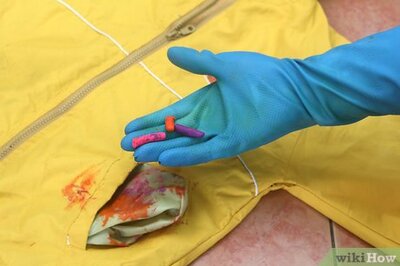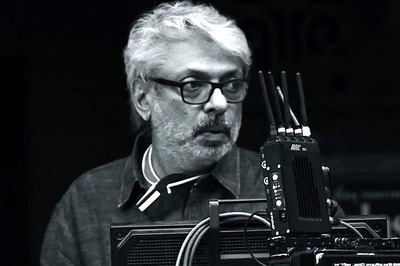
views
LOS ANGELES: Californias Sept. 14 recall election could remove first-term Democratic Gov. Gavin Newsom from office. Just over 5 million mail-in ballots the form of voting most Californians use already have been returned out of 22 million sent to registered voters.
The contest is unfolding as the state sees a surge in coronavirus cases from the delta variant and the return of masks and other mandates and restrictions in many places. There are raging wildfires in Northern California, crime rates have been spiking and a homeless crisis continues unabated.
Republicans are hoping for an upset in a heavily Democratic state, where the GOP hasnt won a statewide election since 2006. The election is being watched nationally and the outcome could influence the 2022 elections, when a closely divided Congress again will be in play.
How did California arrive at this point? Here are some answers:
___
WHAT IS A RECALL ELECTION?
California is one of 20 states that have provisions to recall a sitting governor, 19 through elections. The state law establishing the rules goes back to 1911 and was intended to place more power directly in the hands of voters by allowing them to remove elected officials and repeal or pass laws by placing them on the ballot.
Recall attempts are common in the state, but they rarely get on the ballot and even fewer succeed. The only time a governor was recalled was 2003, when Democrat Gray Davis was removed and voters replaced him with Republican Arnold Schwarzenegger. A federal judge in late August rejected a lawsuit that sought to block the election on constitutional grounds.
___
WHY IS THERE A RECALL DRIVE AGAINST NEWSOM?
The answer is simple and complicated.
The simple part: Californians grew angry during the pandemic. Whipsaw stay-at-home orders by Newsom, crushing job losses from business closures, shuttered schools and the disruption of daily life soured just about everybody. Many of lifes routines were cut off at some point if not altogether, whether trips to the beach or lunches at a favorite taco joint.
The complicated part: In a state with nearly 40 million people, there are many grievances, including Californias wallet-sapping taxes, rising food and gas prices, the threat of water rationing to contend with a long-running drought, a homeless crisis and the continuing menace of wildfires. As governor, Newsom is a ready target for that resentment from voters who are looking for someone to blame.
He is also being hit by fallout from a multibillion-dollar fraud scandal at the state unemployment agency while weathering a public shaming for going mask-less while dining out with friends and lobbyists at an exclusive restaurant last fall, while telling residents to stay home for safety.
___
HOW DOES THE ELECTION WORK?
There are two questions: Voters are being asked if Newsom should be removed, yes or no, and then who should replace him. They will choose from dozens of replacement candidates. If a majority of voters approve Newsoms removal, the candidate who gets the most votes on the second question becomes governor. If Newsom is recalled, his replacement could be elected with just a fraction of the votes. With dozens of candidates dividing those ballots, its possible a winner could get 25% or less.
Statistics compiled by Political Data Inc., a firm that gathers voting information for Democrats, found that just over 5 million voters have returned mail-in ballots, which would equal about a 23% turnout rate with voting continuing through Sept. 14. Senior citizens are voting in their usual high numbers, while younger voters are mostly ignoring the contest so far.
___
WHAT REPLACEMENT CANDIDATES HAVE ENTERED THE RACE?
There are 46 names on the certified ballot, including former Congressman Doug Ose, who withdrew because of health reasons. The 24 Republican candidates include talk radio host Larry Elder, Kevin Faulconer, the former San Diego mayor; businessman John Cox, who was defeated by Newsom in 2018; Caitlyn Jenner, a reality TV personality and former Olympian; and Assemblyman Kevin Kiley.
There are nine Democrats, 10 independents, two Green Party members and one Libertarian. No Democrat with political stature decided to run the best-known Democratic candidate is real estate agent and YouTube personality Kevin Paffrath. Most of the candidates are largely unknown and have not mounted credible campaigns.
___
WHAT ARE CANDIDATES PROMISING?
Elder, who polls have leading the field of possible replacements, has promised to bring a fresh eye and common sense to Democrat-dominated Sacramento, and has said he would swiftly lift state mask and vaccine mandates. Kiley has said he would immediately end the pandemic state of emergency, which would automatically wipe out all state and local orders issued under it.
Faulconer has proposed ending the state income tax for individuals making up to $50,000 and households up to $100,000 as part of a plan to make the state more affordable for the middle class. Cox sought to gain attention by campaigning with a 1,000-pound (450-kilogram) Kodiak bear, which he said represented the need for beastly changes in the state, and also is calling for a historic-sized tax cut.
___
WHAT IS NEWSOM SAYING ABOUT THE RECALL?
For months, Newsom steered around questions about a possible recall election, saying he wanted to focus on the coronavirus, vaccinations and reopening schools. But in March, he launched an aggressive campaign strategy and began running ads attacking the recall and doing national TV and cable interviews. The main committee opposing the recall had raised nearly $50 million by the end of July. Newsom has acknowledged that people were anxious and weary after a difficult year dealing with the virus and restrictions.
Newsom, who was elected in a 2018 landslide, sees the recall as an attack on Californias progressive policies. Democrats say the effort to remove him is being driven by far-right extremists and supporters of former President Donald Trump. The recall is backed by state and national Republicans, but organizers argue they have a broad-based coalition, including many independents and Democrats.
More recently, Newsom has focused his attacks on Elder, calling him more extreme in many ways than former President Donald Trump. Elder dismisses such criticism as a political ploy to divert attention from Newsom’s record on crime and homelessness.
The governor spent much of 2020 on the defensive. But he has benefitted from a record state budget surplus that allowed him to tour the state to announce vast new spending programs, including $12 billion to fight homelessness; checks up to $1,100 for millions of low and middle-income earners who struggled during lockdowns; and $2.7 billion to pay for all of the states 4-year-olds to go to kindergarten for free.
___
HOW PRECARIOUS IS NEWSOMS HOLD ON HIS JOB?
In the depths of the pandemic, Newsoms popularity was tumbling and he appeared imperiled, with widespread unrest over long-running school and business closures. Many business owners were infuriated by what they saw as Newsoms heavy-handed restrictions that had some open and close several times. Others rebelled against mandatory mask-wearing rules.
Earlier this year, a reopened economy and the astounding windfall of tax dollars helped Newsom recover his standing. However, when Newsom fully reopened the state on June 15 virus cases were near record lows. Since then cases have been climbing, particularly among the unvaccinated.
Los Angeles County, which accounts for a quarter of the states population, re-imposed a mandatory mask order on people who are indoors at public places, even if theyre vaccinated. California also is requiring K-12 students to wear masks when they go back to classrooms. Such an order could hurt Newsom, especially among those who felt he didnt do enough to reopen schools last year.
Newsom himself has been warning the race is close, and Democrats fear many of their voters are shrugging at the contest while Republicans and conservatives are eager to vote.
Still, Newsom has an advantage over his GOP foes California is one of the countrys most heavily Democratic states. Democratic voters outnumber Republicans by nearly 2-to-1, and the party controls every statewide office and dominates the Legislature and congressional delegation.
Republicans last won a statewide election in 2006, when Schwarzenegger was reelected.
Disclaimer: This post has been auto-published from an agency feed without any modifications to the text and has not been reviewed by an editor
Read all the Latest News, Breaking News and Assembly Elections Live Updates here.




















Comments
0 comment